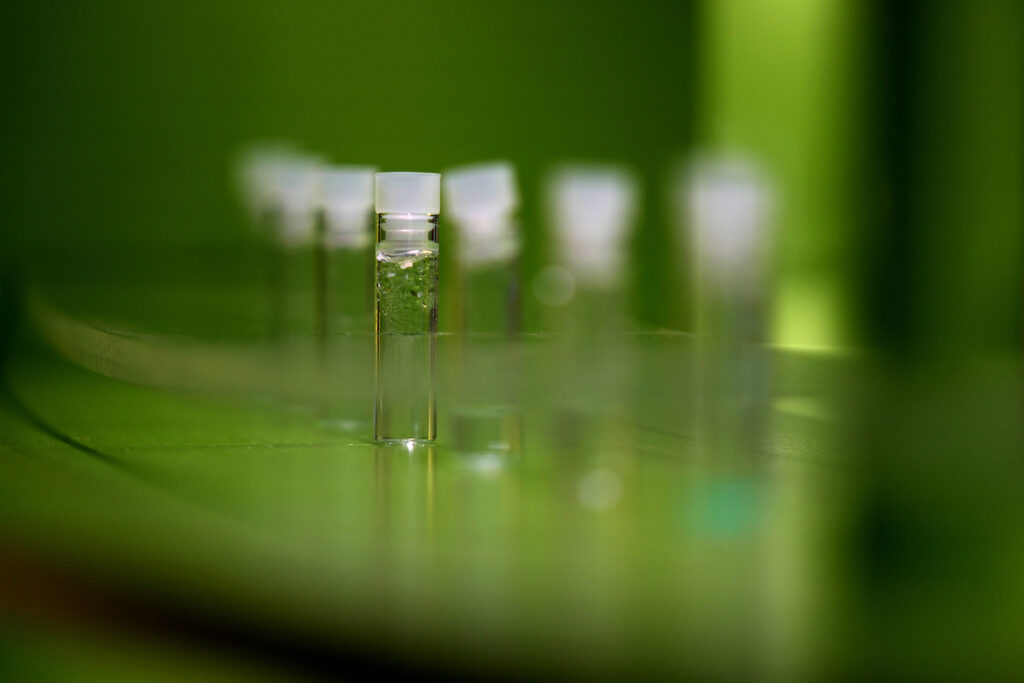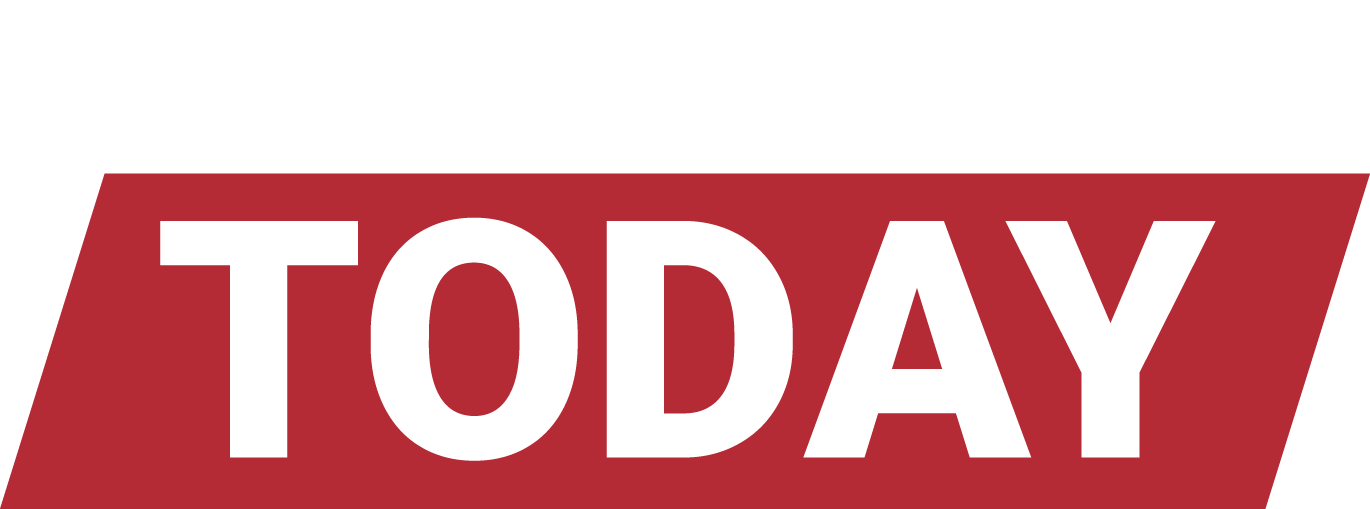In an examination of bio-surveillance, UCLA professor and artist Lauren Lee McCarthy presents her exhibit, “Bodily Autonomy,” featuring two core works: “Surrogate” and “Saliva.” Brought to Fresno State by the Center for Creativity and the Arts, the exhibit is open from 10 a.m. to 4 p.m., Monday through Friday, through Sept. 26 at the Phebe Conley Art Gallery.
An artist talk will be held at 4 p.m. Thursday, Sept. 11, in the Conley Arts building (Room 101), next to the gallery. A reception will follow at 5 p.m. in the adjoining courtyard and gallery.
“Saliva” is a series of performances, installations and videos that explores DNA sampling and data harvesting through the routine collection of swabs and saliva. The exhibit features a saliva exchange station where visitors can trade samples with one another, assisted by an attendant. The exchange examines bio-surveillance and data harvesting, challenges anonymity in data collection, encourages discussion on data privacy and prompts reflection on privacy and consent when personal identity is collected in data profiles. The saliva exchange is open every Wednesday from 4 to 6 p.m. during the exhibition and at the reception.
Initially commissioned in 2024 by the Mandeville Art Gallery at UC San Diego, the process sidesteps the anonymity of medical and corporate entities and invites active discussions on data privacy, race, gender and class as they pertain to genetic material.
“In the first saliva exchange in the Conley Art Gallery, I observed some really great social interactions between the saliva baristas and participants,” said Chris Lopez, director of the Center for Creativity and the Arts. “While the idea of exchanging saliva may seem unusual, I am struck by the sincerity of the audience’s involvement in this social experience.”




For “Surrogate,” McCarthy offers her body as a remote-controlled surrogate to individuals and couples interested in having a child.
“The parents could decide what I eat, what I do, when I sleep — having complete control over the body in which their baby is growing,” McCarthy states on her website.
While the proposition is never fully realized by the artist, through performances, videos and installations, she prompts important conversations regarding familial norms, legal barriers, genetic manipulation, gender and reproduction.
Together, “Surrogate” and “Saliva” prompt urgent questions about agency and control in networked society. McCarthy’s works reveal how algorithmic systems infiltrate our most intimate spaces — from reproduction to genetic data — challenging viewers to consider who builds these systems, whose values they prioritize and how marginalized communities become targets rather than beneficiaries.
McCarthy is an artist examining social relationships in the midst of surveillance, automation and algorithmic living. She is the creator of p5.js, an open-source creative coding platform that prioritizes inclusion and access. She has been recognized as a United States Artist Fellow, Sundance New Frontier Fellow, Eyebeam Fellow and Creative Capital Grantee.
The Center for Creativity and the Arts’ mission is to engage the public with the arts through dynamic, interdisciplinary programming that highlights local topics with global perspectives. Through art exhibitions, films, lectures, debates, theater and musical performances, the center aims to stimulate public engagement through inquiry, discussion and understanding.
“Bodily Autonomy” is sponsored by Creative Capital, and the exhibit at the Phebe Conley Art Gallery is sponsored by Fresno State Associated Students, Inc.
A conversation with Lauren Lee McCarthy
On Nov. 11, at the artist reception, Marketing and Communications Specialist Benjamin Kirk caught up with McCarthy to have a conversation about her “Bodily Autonomy” exhibit.
Q: How do you see the relationship between digital surveillance and physical autonomy evolving, especially as biotechnology becomes more integrated into our daily lives?
A: I think that our surveillance is constantly increasing, and we’re becoming more and more acclimated to it, or maybe even feeling we just have to surrender and accept it. I think it’s useful to have these conversations about what’s happening and how we feel about it. And the point is not to tell anyone that surveillance is good or bad as a blanket statement, but to feel like we should be able to form our own opinion. We should be able to make choices about what we engage in.
Q: Especially with the Saliva exchange exhibit, what have you observed about how people’s comfort levels and awareness change when the data transaction becomes face-to-face? Because it’s a little bit different than giving it to a company where it kind of disappears. It’s more of a face-to-face interaction, in a way.
A: I think it really provokes some of the questions that are embedded in all of these exchanges. So when you’re giving it to a company or doing it through a COVID test or something, I think that’s obscured what’s actually happening in the hope with this installation is that it brings some of those questions to the surface – to feel like there’s actually a human you could have a conversation about this rather than just a system that you have to insert yourself in without any discussion. Some people have commented that doing this feels more wrong or invasive in some way… I heard musings about that. It’s strange because I can actually feel more comfortable with the system.’ By having the moment to pause and talk about it with someone, I think it reveals a lot of the questions and discomfort about what’s happening.
Q: Have you found conversations arise about race, gender or class? Are there any patterns that you’ve noticed come up with the exchange?
A: I think embedded in this work, one of the questions is, ‘whose saliva has value?’ You pick someone’s saliva to take home. How do you decide? There are all these different self-identified classifier tags, like their race or their gender or their skills or height or anything they want, and then you can search and you select the saliva that you want to take based on that. It’s all kind of speculative. Right now, there’s not actually any value to the saliva, but in the future, who knows? So I think I’m trying to point to some of those questions about genetic selection and asking what happens when things like race or gender or class are encoded into these systems. Are we comfortable with that?
Q: Have you heard about anything that people do with the saliva?
A: Yes. I heard people dump it in the ocean, pour it in their gardens, put it in their bedside table. Drink it. I’ve seen it drunken. A few people have mentioned putting it in their fridge and then thinking, ‘Oh, no, I have to explain this to my husband now.’ That’s what I really like about this exhibit, when you leave the gallery with the saliva, i t’s really up to you, no one is telling you what to do with it. But it’s this, provocation that, is just like, what do you do with this? You just throw it away, or do you put it somewhere?
Q: So what is done with the data beyond the exchange? Is it secure?
A: Nothing. Once the saliva is taken, the data is no longer stored. It’s just an exchange. And that’s important. It’s an alternative to the data accumulation that happens at various companies.
Q: How do you see the audience play a role in these works? Are they participants, subjects or entirely something else?
A: Participants. Definitely not subjects. And I think it comes down to control. So the whole thing is set up to try to create a wave of people to opt in or opt out… and give consent. Nobody is forcing anyone to do anything. It’s their saliva. It’s just an option to be presented. In that way, I see them as participants in a collaborative work that’s being made through the interaction of all these different people engaging with it.
Q: With ‘Surrogate,’ you mentioned the piece wasn’t fully realized – but what do you see as the importance of the proposition itself versus its actual execution? What’s the boundary between the concept and the reality? What does that boundary reveal?
A: I was thinking about these questions of control. On one hand, it’s thinking about the overturning of Roe v. Wade and the way that women’s bodies are controlled literally by the government. In the Last election, we had autonomy to decide what we would do with our bodies. Thinking about control in the technological sense, with things like gene editing or all the different reproductive technologies.And also thinking about what our relationship is to new life, which, as parents or as older people, we might try to have control over another life, and ultimately, much of it is out of your hands.
Q: What do you think the people you talked to about having that control over you felt? What was your sense of how that felt to them to have that power? And do you think that informs the ideals that our society has with projecting power on women’s bodies?
A: I think so. I mean, you can see it in the video – their reactions. Right? It was all across the board.
Q: Is there anything I missed? Anything you would like to add?
A: I think this show was really open to interpretation. I have my own thoughts and ideas about technology, but with all these works, it’s not trying to tell people what to feel or what to think, which is to suggest that we can feel, and we can think, and we can have these conversations and make up our own minds about these different issues.


